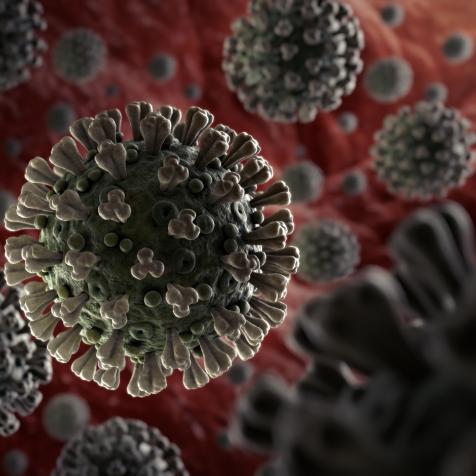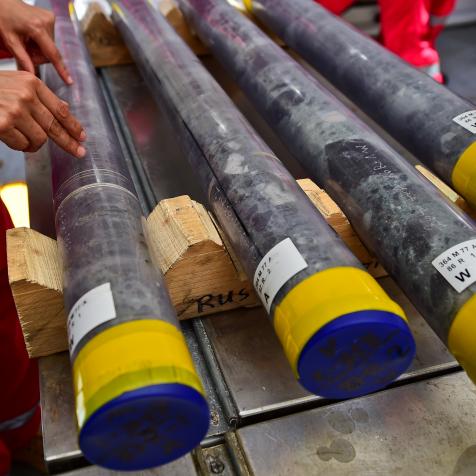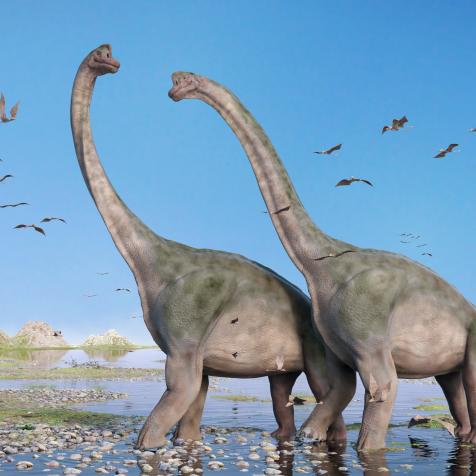
LEONELLO CALVETTI/SCIENCE PHOTO LIBRARY
Survival Chemistry: The Ingredients for Life on Earth
Oxygen, hydrogen, carbon, and a few other elements from the periodic table make up 99% of our bodies.
Our body’s chemical and physical make-up and the way it functions are incredibly complex. Human bodies are estimated to contain up to one hundred trillion cells. We need fuel for these cells to function, provided by molecules, compounds, and chemical elements, yet 99% of our body’s mass consists of just six elements.
The Components

MR.Cole_Photographer
Oxygen (65%), carbon (18%), hydrogen (10%), nitrogen (3%), calcium (1.5%) and phosphorus (1%) are the most common. Substitute sulfur, which in our bodies makes up 0.25% of mass, for calcium and you have the chemical ingredients for all life.
Carbon is the basis for thousands of compounds, such as fats, proteins, and nucleic acids (including DNA) that sustain us. Oxygen and hydrogen bond with carbon to form the organic compounds that are the basis for all life on Earth. Plus, hydrogen forms water with oxygen (H2O), making up between 65 and 90% of every cell.
Nitrogen is also found in many organic molecules including DNA and amino acids. These are vital to build proteins, synthesize hormones for development and growth, and make neurotransmitters for brain function. But without the body’s most common metal–calcium–we wouldn’t be able to stand upright or eat properly, as it firms up our bones and teeth.
Around 60 chemical elements in total are present in our bodies. Trace amounts of some elements, less than 0.01% of body mass, are still considered essential. These include zinc, selenium, cobalt, iodine, manganese, and chromium–important in functions like hormone regulation, regulating sugar levels, enzyme production, and protein formation.
How We Survive, Basically

Andriy Onufriyenko
We have six basic life processes that we undergo as living organisms. We all grow and develop, move, organize our cells, reproduce, use energy, and exhibit homeostasis (i.e. regulate or balance functions). To do this, we need steady intake or production of certain important molecules.
Water is the building block of most tissue, making up about 70% of our brain and heart. We can survive weeks without food, but only days without water. An adult male needs about 3.2 quarts (3 liters) a day in food or liquids to survive--women need slightly less at 2.3 quarts (2.2 liters).
Water is a life preserver. It lubricates our joints, regulates temperature through sweat, provides saliva to digest, acts as a shock absorber for the brain, and helps to metabolize and transport carbohydrates or proteins through our bloodstream.
Just as vital is the oxygen gas molecule O2. We can live about three minutes without it. This highly reactive gas forms oxides with most elements and provides the energy released by cellular respiration that drives our bodies.
Another essential macro-molecule: deoxyribonucleic acid, or DNA makes the blueprint for our entire physical make-up. This double helix nucleic acid contains our exact genetic instructions and tells our cells how every single protein should be made: from nails, to hair, to the antibodies that fight disease.
Another cellular essential is the molecule adenosine triphosphate, or ATP. Containing much of the body’s phosphor, this organic compound stores, and transports chemical energy within cells. Our nervous system relies on ATP to function and our body continuously recycles it. One single molecule is recycled 500–700 times a day.
How do you feel now about these life-giving chemicals? Well, if it focused your attention, that is down to another chemical neurotransmitter in our brain called norepinephrine, which also helps us retrieve memories. If you feel happier, that is serotonin, which also controls moods, sleep, and appetite.
We still don’t know with 100% certainty what role all the chemical elements perform in our bodies, but studying them provides a fascinating insight into how life goes on.


















